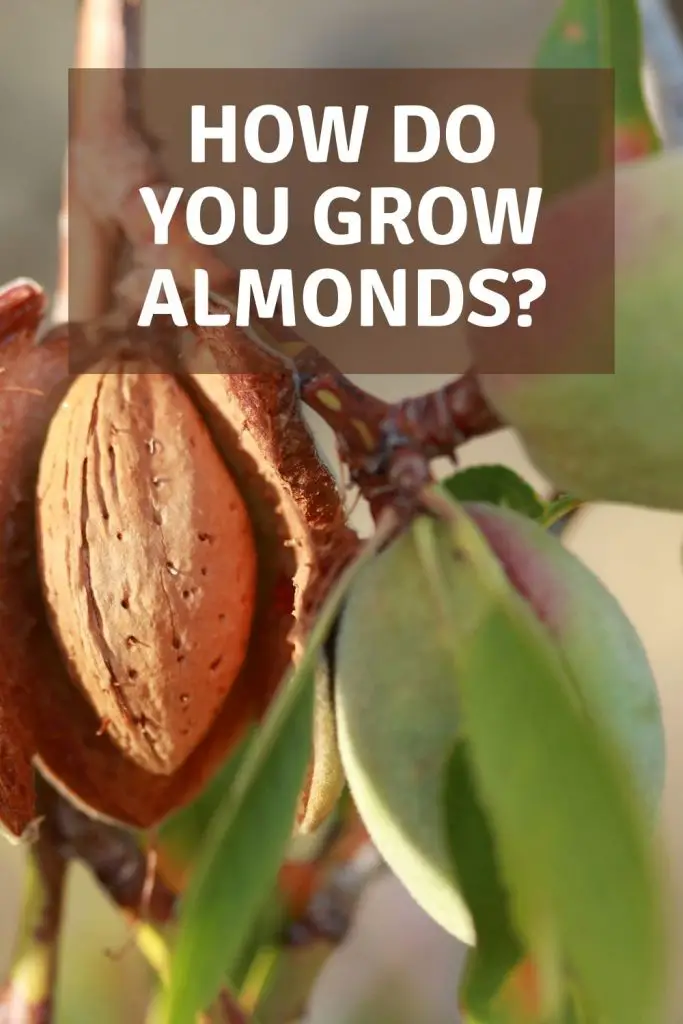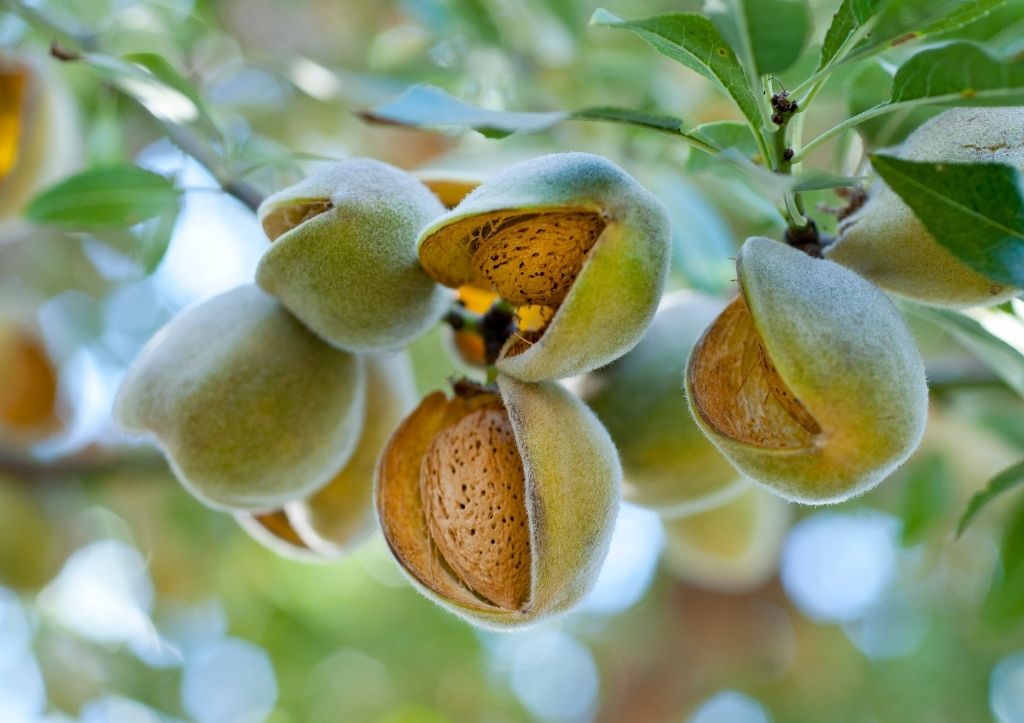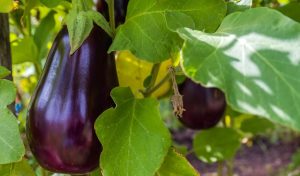It may come as a surprise to some, but you can actually grow almonds in your own backyard from seeds, cuttings or a ready grown tree.
Almond trees are a beautiful addition to any garden, they’re easy to care for and will produce good quantities of nuts for little effort.
Almonds can be grown from cuttings or seed and will thrive in hot areas that receive lots of sunshine. You can grow almonds as small trees in pots or they can be grown in your garden if the conditions are suitable.

If you enjoy nuts then you probably love almonds.
They feature in a wide range of dishes and their unique flavour is typically associated with marzipan and many cakes and other puddings which are common around Christmas time.
Almond trees are often found in warm. dry areas such as the Spanish mountains and California where they are cultivated commercially on large scale almond plantations.
If you can provide the right growing conditions for this tree then you may be able to harvest your own almonds at home.
[amazon box=”B0934N4Y8Z” template=”horizontal”]
Where can you grow almonds?
If you live in a warm, sunny and dry climate then you should be able to grow your own almonds.
Almonds require very hot summers with high temperatures between 25°C and 40°C.
They also need very little water so areas that are not prone to flooding or have long periods of rainfall throughout the year may not be suitable.
Almonds are very hardy plants which can survive in hot, dry conditions with little rainfall but they will struggle with frost.
The almond flowers early in the season ( like the peach ) and frosty conditions, when in blossom, will cause problems for the plant.
Soil conditions need to be well drained and deep with a good loam structure and although they will tolerate other soils you should avoid damp and heavy soils unless you can improve their structure.
How to grow almonds from seed
One way of growing almond trees is from seed. This requires patience and time since the tree will not produce fruit for about 10 years.
Start by placing almond kernels in water to soak for 48 hours and then remove them from the water, put them onto a wet towel or cloth, inside a plastic bag and then place in the refrigerator.
You will need to leave them in the fridge for around 3 to 4 weeks – you’ll begin to see signs of germination with shoots appearing.
When the seeds begin to sprout, remove them from the fridge and plant them carefully into small pots of good quality, well drained potting compost.
The pots should be kept in a warm place that gets plenty of sunlight such as a draught free windowsill or a cold frame or greenhouse ( if they are heated ).
Always keep the pots well watered but don’t overwater them and pot the small plants up to larger pots as they grow.
[amazon box=”B08PL17HKW” template=”horizontal”]
How to grow almond trees from cuttings
You can also start almond trees by taking cuttings.
Find a healthy tree on which to take your cutting and select a shoot that is around 10cm long on which there are young leaves emerging.
Using sharp secateurs, cut the stem on an angle just below a leaf joint ( node ) and remove the lower leaves.
The cutting should be potted in a mixture of equal parts peat moss and coarse sand or grit in a small pot filled with compost.
It’s very important that you keep the soil moist but not wet, for around 5 weeks until the roots are well developed. If required you can move them into larger pots but there must be sufficient room for the roots to spread.
The young plant should be kept warm, in dappled or partial shade, and given plenty of water.
Growing almonds from young, bought trees
You can also grow your own almonds from young trees that you can often purchase from garden centres or specialist suppliers.
For many people this is the best and easiest option as the young plants will have been cultivated from healthy parents and will be of a variety that will fruit reliably.
These young trees can often be pot grown and moved around the garden to make the most of the sunshine and can be brought inside during cold weather.
If you live in an area that has the right weather conditions and soil for growing almonds then you can also plant these pot grown trees into your garden where they will grow into large, mature trees.
[amazon box=”B08WH6ST3V” template=”horizontal”]
Pruning almond trees
Almond trees are fast growing but they can become heavy if they are not pruned regularly to keep them under control. If you grow your almond tree in a container then you will need to prune it each year.
If the tree is planted into your garden then check that it doesn’t begin to spread too far and wide so as to occupy more space than you have available.
You can use a small pair of secateurs for this job or, if the lower branches are becoming too long, simply use a pair of sharp garden shears to cut them back.
Don’t forget to remove the lower branches if they are obscuring other plants or more delicate foliage below.
The aim is to keep the tree looking neat and tidy, not overgrown with lots of long spindly branches that are difficult to prune or tie in to shape.
Young trees should be pruned each year, while mature trees only need to be pruned every 2 or 3 years.
Even then, cutting back can help considerably with overall tree health and improve the quality and yield of fruit.
Watch the weather when growing almonds
Almond bushes produce flowers early in the year – they’re one of the earliest flowering fruit trees so this can be a problem if you live in an area with potentially cold winters.
If the tree is grown in the open garden then protect it each winter by tying frost protecting fleece onto it’s branches.
You should also wrap insulation around the trunk to help keep it warm and prevent severe damage or even death from late frosts.
Harvesting almonds
Almonds are ready to pick when they have a brittle shell.
If your trees are large then consider placing a tarp or blanket underneath the tree before you begin.
This will catch the almonds as they fall, making collection somewhat easier.
The easiest way to free the almonds from the branches is to shake the tree or whack the branches with a stick.
The nuts are protected by a nice hard shell so there’s little risk of them becoming damaged when they hit the ground.
Final words
Almonds are a nutritious food containing both soluble and insoluble fibre so they contribute to good digestive health.
They have an abundance of vitamins along with minerals such as calcium, phosphorous, magnesium and potassium.
They also contain antioxidants which help to protect the body cells from damage.
Almonds are used for making milk, flour, pastries and much more so they really are an all round nutritious food.
So, if you have the right conditions in your garden – plenty of sun with well drained soil – then why not give almond trees a try?
You’ll be amazed at how much fruit you get with minimal effort.






